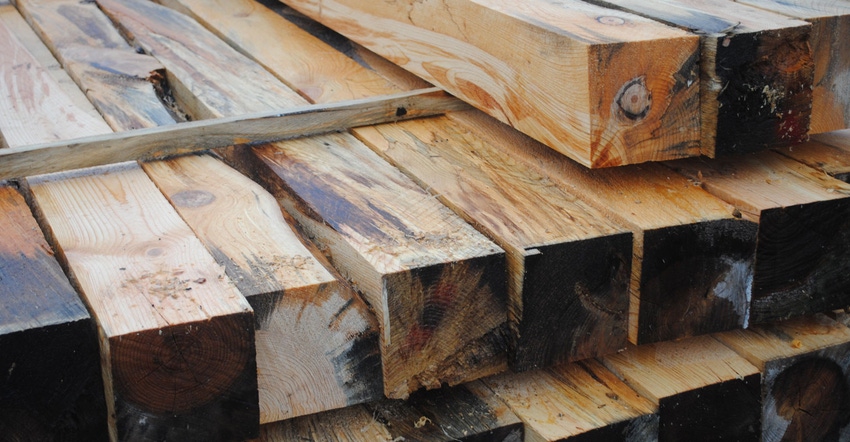
If you enjoy milling and using timber from your own farm, keep in mind that moisture content is crucial for the utilization phase after lumber has left the sawmill. One inexpensive way to dry fresh-sawn lumber before it goes to final conditioning in the kiln is to air-dry, using the outside environment to do the drying work.
Scott Lyon, forest products specialist with the Wisconsin Department of Natural Resources, said there are numerous advantages to initial air-drying. While it is not a controlled process like kiln-drying, air-drying is cheaper.
Overall, drying increases the strength and stability of the lumber because the boards need to be dried before they can be used. At a recent Wisconsin DNR forest products webinar, Lyon noted that air-drying will reduce the weight of the lumber and make it cheaper to transport if you are moving lumber to a kiln for final conditioning. Air-drying improves kiln efficiency because it starts the process before that final conditioning.
Drying lumber prevents stain, mold and decay, and allows for proper machining, gluing or finishing of the wood, depending on the final use. Proper drying minimizes glue failure and excessive wood movement, and allows for better finish application.
“If you couldn’t dry it, your furniture or household wood finish would fall apart,” Lyon said.
Moisture counts
There are many factors to consider with air-drying because you cannot control the environment. Air velocity, temperature and relative humidity play crucial roles in success, depending on what part of the country you are operating. The lumber will take on the moisture or relative humidity over time of the outside environment.
For Green Bay, Wis., in most of Nebraska and parts of the upper Plains, that “equilibrium moisture” might average between 12% and 14% through the year. For the wetter parts of the northwest U.S., that number is higher. For the drier southwest, it is lower.
For use as lumber in home furnishings or finish, the equilibrium moisture of the lumber needs to be between 6% and 8%, Lyon said. Wisconsin and most of the upper Plains offer about six good months of drying annually.
Another factor that affects drying includes the species of the wood, because more dense species such as spruce take longer to air-dry, compared to less dense species such as poplar or cherry. Thicker lumber takes longer to dry, and even grain pattern and surface checks or end checks in the wood will affect air-drying time.
It should be noted that excessive moisture, heat or cold can affect the results because of the uncontrolled nature of the process, relying on the unpredictable outside environment to do the heavy lifting. There will be degrade losses to value with air-drying because of this fact.
There could be some mold or stain, end checks or splits, depending on how the yard is set up, environmental conditions during the process, and how well you mitigate those impacts.
Yard setup
Your drying yard needs to be set up to gain advantage of prevailing winds. “The yard needs to be well-drained, and you need to control vegetation, because that can cause staining and slower drying rates,” Lyon said. “The location should be level, on smooth, firm ground or pavement. Think about what you can afford.”
You want to stack lower-quality lumber outside and on top of the lumber stacks to take the brunt of the weather, with the best quality lumber inside the pack. Coating the ends of the lumber, and a roof or shed over the top of stacks, prevent degradation.
“You want to slow down the drying process to reduce checking,” Lyon said.
Learn more about air-drying lumber at dnr.wisconsin.gov, or email Lyon at [email protected].
About the Author(s)
You May Also Like






